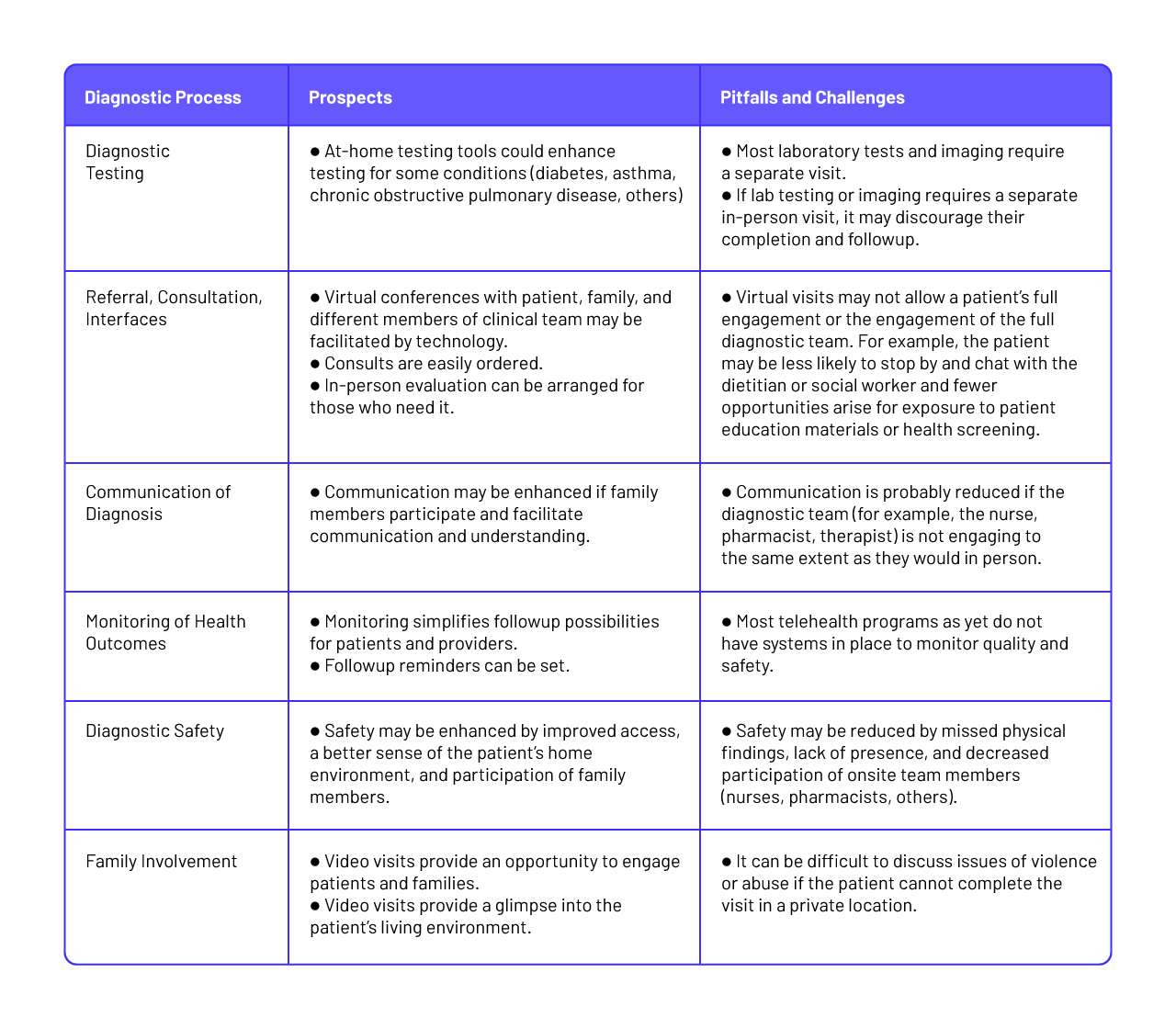LP 2&3: Foundational Knowledge - Types of Teleconsultations
1. Telediagnosis
Telediagnosis refers to remote diagnosis (“tele” means remote, prefixed to diagnosis). These platforms are designed to enable transmission of physical examination records and medical reports remotely or concurrently to a specialist at a different or the same geographical location. The examining specialist doctor may be in the same geographical region at the same time of the examination, or the specialist may be remotely located: the transmission platform is designed to work identically. Telediagnosis platforms ensure that records of images and videos preserve the diagnostic quality even after being subjected to compression procedures for transmission. The use of the Digital Imaging and Communications in Medicine (DICOM) standard is a recommended requirement to allow heavy file traffic without impairing efficiency in use. A limitation might be low connection speed for data transmission or restrictions with bandwidth. Therefore, balancing image quality, efficiency in use, and available bandwidth pose significant challenges to telediagnosis platforms (Basu, 2019).
Implications of Telediagnosis for Diagnostic Quality and Safety?


(Smith et al., 2020)
2. Telemonitoring
Telemonitoring refers to the transmission of symptom scores, physiological data including heart rate, blood pressure, oxygen saturation, and weight directly to care providers either via automated electronic means or by web-based or phone-based data entry. Over time these interventions have evolved from automated phone response systems to web, to interactive television-based systems, to mobile phone or PDA-based systems to complex systems, which wirelessly transmit recorded physiological data.
As an illustrative example of a telemonitoring platform, think of an application that assists a patient to control weight. The telemonitoring platform monitors the patient’s physical activity and the individual's records of meals and calories consumed in a day, and transmits the data for analysis by professionals. The professionals can then act based on received data to help the patient reduce weight. Here, the telemonitoring platform is used with active participation of the patient. In other situations, users may have their data collected through connected devices, for example, blood glucose for diabetics or blood pressure measurements for a hypertensive patient. Such monitoring may lead to prevention or in the postdischarge planning and treatment in patients with heart attack or stroke. In yet another scenario, telemonitoring platforms can be integrated in home care equipment to enable continuous monitoring and generate emergency alerts or for elderly patients, who can be continuously monitored with sensors that transmit an alert when the patient suffers a fall at home (Gogia, n.d.).
The advantages of TelemonitoringTelemonitoring allows patients to remain in their homes. Better follow-up of patients reduces the complications of chronic diseases such as diabetes, hypertension, or chronic heart failure.
- Telemonitoring may reduce patient travel, time off from work, and overall costs.
- Several systems have proved to be cost-effective, such as home monitoring of high-risk pregnancies, infants, pediatric pacemaker patients, and patients suffering from chronic diseases.
- The cost of simple telemonitoring was evaluated to be approximately $70 per month. A standard emergency room charge is $260.
- Telemonitoring provides accurate and reliable data, which results in stabilization and often improvement of chronic diseases and avoids unnecessary treatments because of the “white-coat” effect.
- Real-time telemonitoring of patients transported in ambulances reduces the time for initiating treatment and allows the emergency crew to be better prepared (Meystre, 2005).